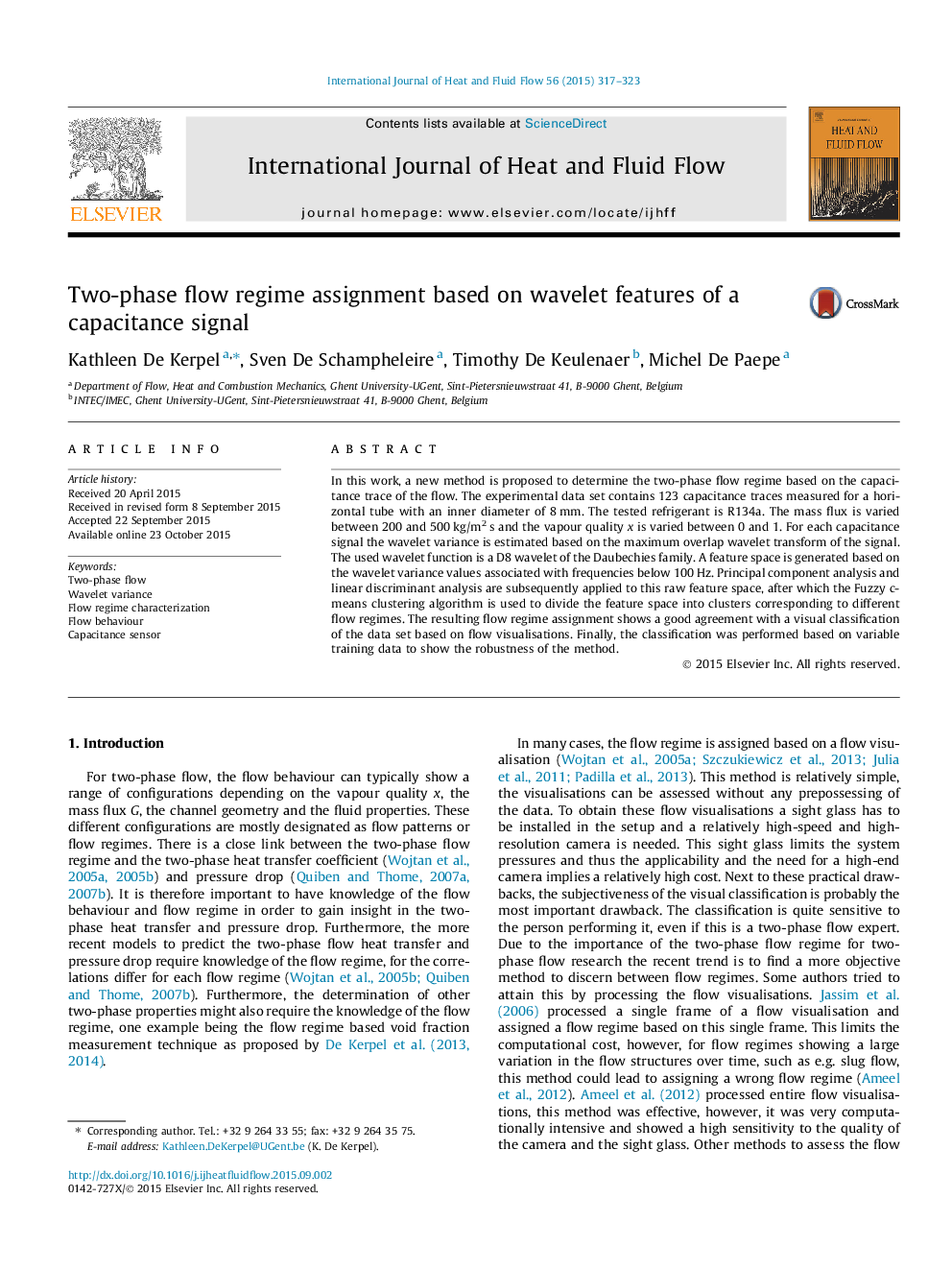| Article ID | Journal | Published Year | Pages | File Type |
|---|---|---|---|---|
| 655005 | International Journal of Heat and Fluid Flow | 2015 | 7 Pages |
•Two-phase flow regime discriminating method is proposed.•Capacitance time traces of the flow are measured.•The wavelet variance is the basis for the feature space.•Dimensionality reduction is used to optimise feature space.•Proposed method is shown to be robust.
In this work, a new method is proposed to determine the two-phase flow regime based on the capacitance trace of the flow. The experimental data set contains 123 capacitance traces measured for a horizontal tube with an inner diameter of 8 mm. The tested refrigerant is R134a. The mass flux is varied between 200 and 500 kg/m2 s and the vapour quality x is varied between 0 and 1. For each capacitance signal the wavelet variance is estimated based on the maximum overlap wavelet transform of the signal. The used wavelet function is a D8 wavelet of the Daubechies family. A feature space is generated based on the wavelet variance values associated with frequencies below 100 Hz. Principal component analysis and linear discriminant analysis are subsequently applied to this raw feature space, after which the Fuzzy c-means clustering algorithm is used to divide the feature space into clusters corresponding to different flow regimes. The resulting flow regime assignment shows a good agreement with a visual classification of the data set based on flow visualisations. Finally, the classification was performed based on variable training data to show the robustness of the method.
